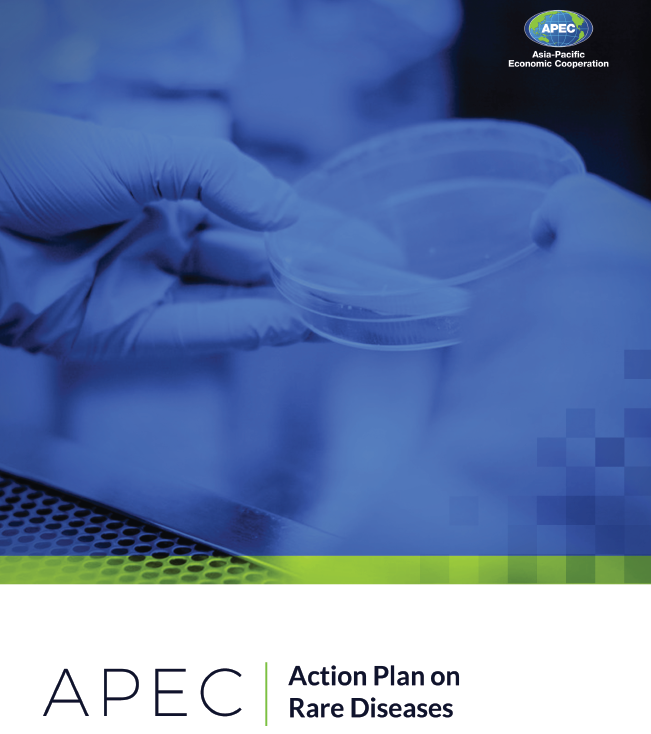The 7th APEC High-Level Meeting on Health & the Economy (HLM7) in Ho Chi Minh City, Viet Nam in August 2017 “welcomed the launch of a new APEC initiative to address barriers to the diagnosis and treatment of rare diseases in the region” and “noted that such efforts will improve the economic and social inclusion of those affected by rare diseases, including caregivers, and ensure a more inclusive Healthy Asia Pacific 2020.” The HLM7 also “welcomed the development of an action plan to facilitate greater alignment of domestic policies and best practices and to provide a framework for regional collaboration.”
The APEC Life Sciences Innovation Forum (LSIF) established the tripartite APEC LSIF Rare Disease Network (RDN) with participation from government, academia, and industry. The Rare Disease Network’s first task was to identify and compile information on the various barriers that economies face in addressing rare diseases. Over time, the RDN plans to continue to scale in size, diversity, and depth of engagement as the entity shifts from its role of informing the development of an APEC strategy on rare diseases to supporting economies in implementing the strategy. In 2018, the RDN organized a series of Stakeholder Consultations in Australia; People’s Republic of China; Republic of Korea; Chinese Taipei; Thailand; and Viet Nam to learn more about the local, frontline experiences with rare disease. Hearing a diversity of perspectives and patient experiences were the priority objectives; the RDN leadership connected with government officials, academics, industry representatives, and other members of the rare disease community including patients in these six (6) economies.
The information assembled through the stakeholder consultations informed the development of a 2-day policy dialogue: the inaugural APEC Policy Dialogue on Rare Diseases in Beijing, China in June 2018. The event facilitated candid discussion between senior leadership from government agencies overseeing health and social services, academic experts from universities and teaching hospitals, industry executives, and leaders from civil society, including patient groups. At the widely-attended dialogue, APEC economies shared best practices and policies for addressing rare diseases and began to collaborate on the development of this APEC Action Plan on Rare Diseases.
Vision 2025
APEC member economies will aim to improve the economic and social inclusion of all those affected by rare diseases by addressing barriers to healthcare and social
welfare services.
Objectives
1. Facilitate greater alignment of domestic policies and regulations;
2. Support urgent implementation of proven best practices; and,
3. Promote multisectoral collaborations and patient partnership.
Pillars
1. Define rare diseases and orphan products with policies and processes;
2. Raise public and political awareness of rare disease issues;
3. Promote innovative research and development;
4. Build human resource capacity in medical, nursing, nutrition, and other allied health and non-health sectors;
5. Facilitate early, accurate, and systematic diagnosis;
6. Coordinate patient-centered care across medical and other health disciplines, life course, and location;
7. Deliver new and accessible treatments to patients;
8. Support financial and social needs of patients and their families;
9. Manage pooling and usage of patient data securely and effectively; and,
10. Prioritize comprehensive domestic rare disease policy integrating Pillars 1-9.


